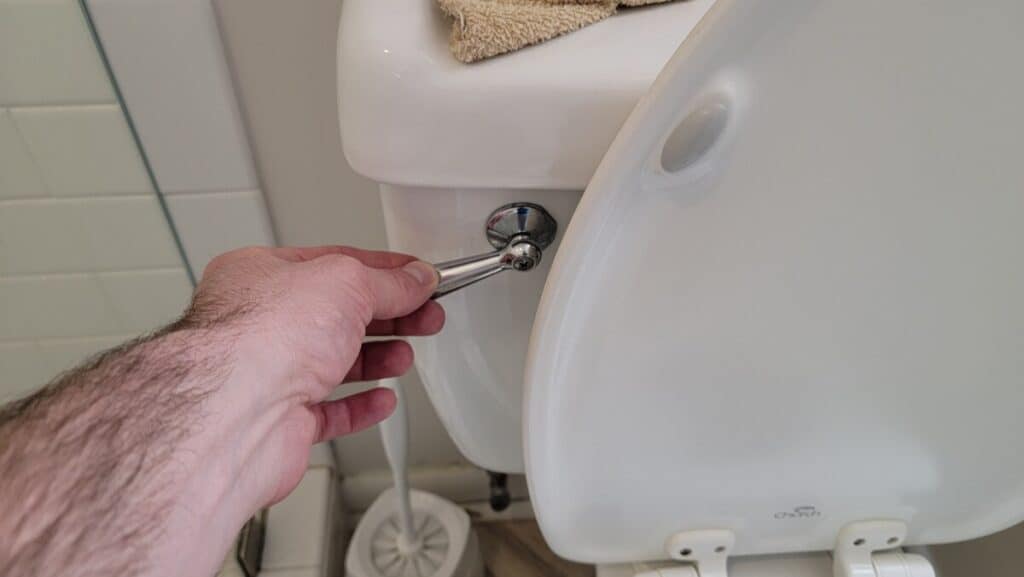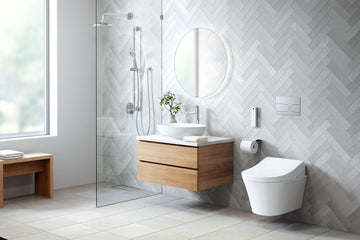In today's world, where water conservation is a critical concern, making informed choices about everyday fixtures can have a lasting impact. Installing a dual flush toilet not only enhances your bathroom's functionality but also contributes significantly to water conservation efforts. But what exactly do you need to know about these innovative systems, and how do they differ from traditional toilets? Let's delve into the essentials and explore why a dual flush system might be the perfect addition to your home.

What is a Dual Flush Toilet?
Before getting into the installation process, it's important to understand what a dual flush toilet is. Unlike traditional toilets, which use a single flush system, a dual flush toilet allows you to choose between two different flush volumes. This system separates waste into two categories: solid and liquid, allowing you to use less water for liquid waste. This smart technology not only supports environmental sustainability but can also lead to reduced water bills.
For a deeper understanding of the differences between these systems, you might find this article on Dual Flush vs Single Flush Toilets insightful.
Benefits of Installing a Dual Flush Toilet
Water Efficiency: The most compelling reason to opt for a dual flush system is its water efficiency. By utilizing a reduced flush for liquid waste, these toilets significantly decrease water usage, making them an eco-friendly option.
Cost Savings: Less water usage translates into lower utility bills. Over time, the savings on your water bill can offset the initial investment in a dual flush toilet.
Environmental Impact: Every gallon of water saved is a step towards a more sustainable future. By reducing the amount of water flushed down the drain, dual flush toilets help preserve vital water reservoirs.
Looking to incorporate more green upgrades in your home? Check out these eco-conscious bathroom upgrades.
Considerations Before Installation
When considering the installation of a dual flush toilet, keep in mind the following factors:
- Plumbing Compatibility: Ensure that your current plumbing system can accommodate a dual flush toilet. You may need to consult with a plumbing professional to assess the situation.
- Cost and Budget: Although dual flush toilets can result in long-term savings, the initial cost can be higher than traditional models. Compare various brands and models to find one that fits your budget.
- Brand and Features: Choose a reputable brand that offers the features you desire. Consider factors like bowl height, seat design, and the ease of cleaning.
- Installation Complexity: While some homeowners may choose to tackle the installation themselves, others might prefer hiring a professional to ensure everything is properly set up.
For additional water-saving tips, visit Woodlands Water Tips.
Steps for Installing a Dual Flush Toilet
Once you've decided on the right dual flush toilet for your needs, follow these steps for a successful installation:
1. Remove the Old Toilet
Start by shutting off the water supply to your existing toilet. Flush it to drain all the water, and use a sponge to soak up any remaining liquid in the tank and bowl. Unscrew the nuts from the bolts that secure the toilet to the floor flange and carefully lift the old toilet away.
2. Prepare the Area
Once the old toilet is removed, inspect the flange for any damage. Clean the area thoroughly, wiping away dirt and debris. Ensure the flange is level and sturdy.
3. Install the New Toilet
Place the new wax ring onto the flange, then carefully position the dual flush toilet bowl on top. Press down firmly to align the bowl with the flange and secure it with bolts. Attach the tank to the bowl following the manufacturer's instructions, ensuring all connections are tight and secure.
4. Connect the Water Supply
Reattach the water supply line to the new tank and turn the water supply back on. Test the dual flush functionality by flushing both options to confirm everything is working correctly. Adjust any settings according to the manufacturer's instructions.
Maintain Your Dual Flush Toilet
Regular maintenance will ensure your dual flush toilet remains efficient and lasts for years to come. Regularly inspect the mechanisms within the tank for wear and tear, and replace any worn parts as needed. Keep the bowl clean and check for leaks to maintain efficiency.
For more on water-efficient solutions, you can explore the benefits of such toilets at Ressler Mateer.

FAQs About Dual Flush Toilets
1. Why choose a dual flush toilet over a traditional one?
Dual flush toilets offer greater water efficiency by providing different flush options for solid and liquid waste, leading to reduced water usage and energy cost savings.
2. How much water can I save with a dual flush toilet?
A dual flush toilet can save thousands of gallons of water each year, thanks to its two-flush system which optimizes water use depending on waste type.
3. Are dual flush toilets more expensive than regular toilets?
Initially, dual flush toilets may be more expensive, but the investment is often offset by water savings over time, resulting in overall cost efficiency.






